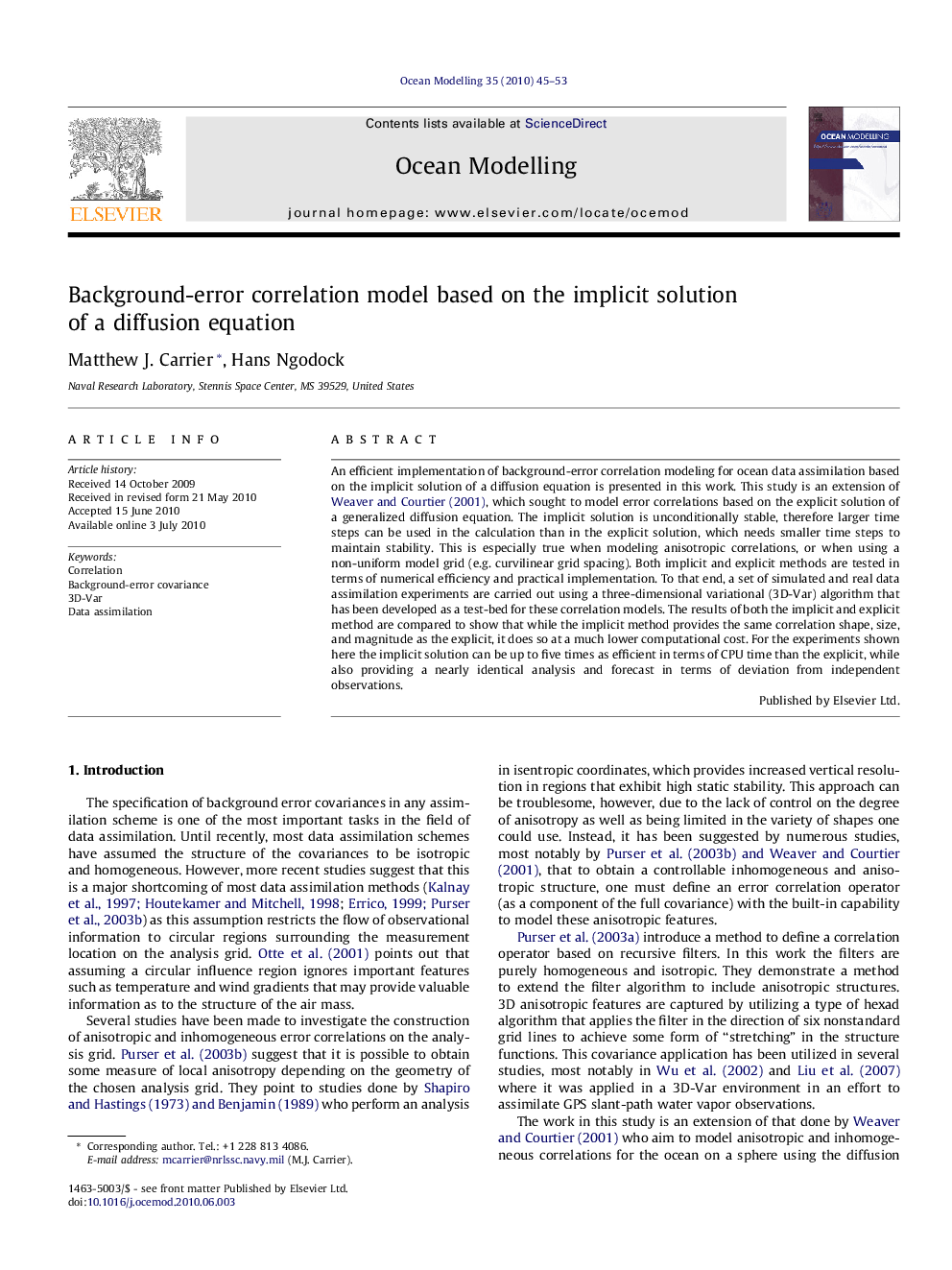| Article ID | Journal | Published Year | Pages | File Type |
|---|---|---|---|---|
| 4552448 | Ocean Modelling | 2010 | 9 Pages |
Abstract
An efficient implementation of background-error correlation modeling for ocean data assimilation based on the implicit solution of a diffusion equation is presented in this work. This study is an extension of Weaver and Courtier (2001), which sought to model error correlations based on the explicit solution of a generalized diffusion equation. The implicit solution is unconditionally stable, therefore larger time steps can be used in the calculation than in the explicit solution, which needs smaller time steps to maintain stability. This is especially true when modeling anisotropic correlations, or when using a non-uniform model grid (e.g. curvilinear grid spacing). Both implicit and explicit methods are tested in terms of numerical efficiency and practical implementation. To that end, a set of simulated and real data assimilation experiments are carried out using a three-dimensional variational (3D-Var) algorithm that has been developed as a test-bed for these correlation models. The results of both the implicit and explicit method are compared to show that while the implicit method provides the same correlation shape, size, and magnitude as the explicit, it does so at a much lower computational cost. For the experiments shown here the implicit solution can be up to five times as efficient in terms of CPU time than the explicit, while also providing a nearly identical analysis and forecast in terms of deviation from independent observations.
Keywords
Related Topics
Physical Sciences and Engineering
Earth and Planetary Sciences
Atmospheric Science
Authors
Matthew J. Carrier, Hans Ngodock,
